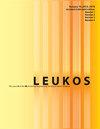A Review of Human Physiological Responses to Light: Implications for the Development of Integrative Lighting Solutions
IF 2.6
2区 工程技术
Q2 CONSTRUCTION & BUILDING TECHNOLOGY
引用次数: 72
Abstract
ABSTRACT Architectural lighting has potent biological effects but applied lighting practices that capitalize on this potential have been limited. In this review, we endeavor to consolidate and synthesize key references that will be useful for lighting professionals, with the goal of supporting knowledge translation into pragmatic lighting strategies. Specifically, we explain relevant terminology, outline basic concepts, identify key references, provide a balanced overview of the current state of knowledge, and highlight important remaining questions. We summarize the physiological effects of light on human health and well-being, including a description of the processes underlying the photic regulation of circadian, neuroendocrine, and neurobehavioral functions. We review seminal work elucidating the elements mediating the potency of light for these physiological responses, with specific attention to factors critical for interpreting those findings. In parallel, we explain and endorse melanopic Equivalent Daylight Illuminance ( ) as the preferred measure to quantify the biological potency of light. Ultimately, while future studies are necessary to further facilitate the translation of laboratory knowledge to domestic and workplace settings, the immediate potential for applied lighting to better support human health is clear. Aiming for integrative lighting solutions that have biologically high potency light during the day and low potency during the night is perhaps the most immediate improvement to be made in order to better support applications for humans.人类对光的生理反应综述:对综合照明解决方案发展的启示
建筑照明具有强大的生物效应,但利用这一潜力的应用照明实践受到限制。在这篇综述中,我们将努力整合和综合对照明专业人员有用的关键参考文献,以支持知识转化为实用的照明策略。具体而言,我们解释相关术语,概述基本概念,确定关键参考文献,提供当前知识状态的平衡概述,并强调重要的剩余问题。我们总结了光对人类健康和福祉的生理影响,包括对昼夜节律、神经内分泌和神经行为功能的光调节过程的描述。我们回顾了开创性的工作,阐明了这些生理反应中调解光的效力的因素,并特别关注了解释这些发现的关键因素。同时,我们解释并支持暗视等效日光照度()作为量化光的生物效力的首选措施。最终,虽然未来的研究需要进一步促进将实验室知识转化为家庭和工作场所环境,但应用照明以更好地支持人类健康的直接潜力是显而易见的。为了更好地支持人类的应用,最直接的改进可能是在白天具有生物高强度光而在夜间具有低强度光的综合照明解决方案。
本文章由计算机程序翻译,如有差异,请以英文原文为准。
求助全文
约1分钟内获得全文
求助全文
来源期刊

Leukos
工程技术-光学
CiteScore
7.60
自引率
5.60%
发文量
19
审稿时长
>12 weeks
期刊介绍:
The Illuminating Engineering Society of North America and our publisher Taylor & Francis make every effort to ensure the accuracy of all the information (the "Content") contained in our publications. However, The Illuminating Engineering Society of North America and our publisher Taylor & Francis, our agents, and our licensors make no representations or warranties whatsoever as to the accuracy, completeness, or suitability for any purpose of the Content. Any opinions and views expressed in this publication are the opinions and views of the authors, and are not the views of or endorsed by The Illuminating Engineering Society of North America and our publisher Taylor & Francis. The accuracy of the Content should not be relied upon and should be independently verified with primary sources of information. The Illuminating Engineering Society of North America and our publisher Taylor & Francis shall not be liable for any losses, actions, claims, proceedings, demands, costs, expenses, damages, and other liabilities whatsoever or howsoever caused arising directly or indirectly in connection with, in relation to, or arising out of the use of the Content. Terms & Conditions of access and use can be found at http://www.tandfonline.com/page/terms-and-conditions .
 求助内容:
求助内容: 应助结果提醒方式:
应助结果提醒方式:


